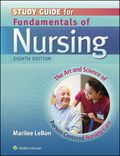
To discuss:
How and why would the student nurse respond to this situation?
Case summary:
The nursing student cares for a 14-year-old teenage patient D in her third trimester, who is visiting the prenatal clinic for the first time. The patient had a history of smoking 2 pack of cigarettes per day and drink beer for 5 night of a week, and eats mostly fast foods. The patient involved in sexual activity with multiple partners and the father of the baby is unknown. The patient does not have parental care and lives in her friend’s house. The resident who examines her is deeply frustrated about her lack of concern towards the baby and did not show any professionalism. The resident told that she is very late to be taken care and as if she trying to kill the baby.
Explanation of Solution
The nursing student can comfort the resident apart from the patient’s presence and try to convince the resident to apologize to the patient. The nursing student also tells the resident that it is the only way to gain the trust of the patient, so that it would the best to give care for the patient as well as for her unborn baby.
To discuss:
The adequacy of the skills for professional practice and what that is tell about the student nurse?
Case summary:
The nursing student cares for a 14-year-old teenage patient D in her third trimester, who is visiting the prenatal clinic for the first time. The patient had a history of smoking 2 pack of cigarettes per day and drink beer for 5 night of a week, and eats mostly fast foods. The patient involved in sexual activity with multiple partners and the father of the baby is unknown. The patient does not have parental care and lives in her friend’s house. The resident who examines her is deeply frustrated about her lack of concern towards the baby and did not show any professionalism. The resident told that she is very late to be taken care and as if she trying to kill the baby.
Explanation of Solution
The student nurse is still not an Advanced Practice Registered Nurse (APRN) to become a nurse advocate, who advocates on behalf of her patients.
To discuss:
Any alternative ways to respond in this situation?
Case summary:
The nursing student cares for a 14-year-old teenage patient D in her third trimester, who is visiting the prenatal clinic for the first time. The patient had a history of smoking 2 pack of cigarettes per day and drink beer for 5 night of a week, and eats mostly fast foods. The patient involved in sexual activity with multiple partners and the father of the baby is unknown. The patient does not have parental care and lives in her friend’s house. The resident who examines her is deeply frustrated about her lack of concern towards the baby and did not show any professionalism. The resident told that she is very late to be taken care and as if she trying to kill the baby.
Explanation of Solution
The nursing student could have talked and counseled the patient that the resident made the comment as he only wanted to give a good care for the baby, since she lacked caring for the baby.
To discuss:
The knowledge, skills, and attitudes do you need to develop to continuously improve quality and safety when caring for child patients like D?
Case summary:
The nursing student cares for a 14-year-old teenage patient D in her third trimester, who is visiting the prenatal clinic for the first time. The patient had a history of smoking 2 pack of cigarettes per day and drink beer for 5 night of a week, and eats mostly fast foods. The patient involved in sexual activity with multiple partners and the father of the baby is unknown. The patient does not have parental care and lives in her friend’s house. The resident who examines her is deeply frustrated about her lack of concern towards the baby and did not show any professionalism. The resident told that she is very late to be taken care and as if she trying to kill the baby.
Explanation of Solution
- The nursing student should have good interpersonal skills to calm down the resident.
- The nursing student should have good communication skills to convince both the patient and the resident.
- The nursing should not compromise on her professional integrity and should look out for patient’s safety to provide quality care.
Want to see more full solutions like this?
Chapter 18 Solutions
EBK STUDY GUIDE FOR FUNDAMENTALS OF NUR
- Define obstetric emergencies and state and briefly explain any two (2) maternal, foetal, and obstetric complications that require immediate intervention.arrow_forwardExplain how mental health services can be effectively integrated into maternal and child health, visa-viz early childhood development.arrow_forwardEnumerate any four (4) potential complications during puerperium and highlight key measures to manage these complications.arrow_forward
- Describe the physiology of the first stage of labour.arrow_forward58. Consider the circuit shown below. Find 11, 12, and I3 when (a) the switch S is first closed, (b) after the currents have reached steady-state values, and (c) at the instant the switch is reopened (after being closed for a long time). 1 R1 ww 13 12 E S 0000 ww R2arrow_forwardRegularity- Rate- P waves- PRI- QRS- Interpretation- Normal sinus rhythm, sinus bradycardia, sinus tachycardia, sinus arrhythmia, sinus pause, sinus arrest, normal sinus with PACs, atrial fibrillation, atrial flutter, multifocal atrial tachycardia, wandering atrial pacemaker, supraventricular tachycardia, junctional rhythm, accelerated junctional rhythm, junctional tachycardia, premature junctional complex, premature ventricular complex, ventricular tachycardia, ventricular fibrillation, idioventricular rhythm, accelerated idioventricular rhythm, asystole, first-degree AV block, second-degree AV block type I (Wenckebach), second-degree AV block type II (Mobitz II), third-degree AV block (complete heart block), bigeminy, trigeminy, quadrigeminy, couplet,somatic tremor,AC interference,wandering baseline and etc (answer correctly using the 5 step method and only use those terms above)arrow_forward
- 76. 80. 81. 82. 83. 33arrow_forward69. 70. 71. 72. 73. 74.arrow_forward63. 64. 65. Rhythm: P wave: QRS Complex: Rate: PRI: Interpretation: Rhythm: P wave: QRS Complex: 66. 67. 68. Rhythm: P wave: QRS Complex: Rhythm: P wave: QRS Complex: Rate: PRI: Interpretation: Rate: PRI: Interpretation: Rate: PRI: Interpretation:arrow_forward
- 59. 57. 60. 62. 55. سلسلہ ་་་་arrow_forward• Define the first stage of labour. • Describe the physiology of the first stage of labour. • Enumerate any four (4) potential complications during puerperium and highlight key measures to manage these complications.arrow_forward• Define obstetric emergencies and state and briefly explain any two (2) maternal, foetal, and obstetric complications that require immediate intervention. • Explain how mental health services can be effectively integrated into maternal and child health, viz-a-viz early childhood development. • Enumerate any four (4) foetal malpresentations in pregnancy and briefly explain their implication in labour while also highlighting their causes and possible complications.arrow_forward
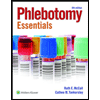 Phlebotomy EssentialsNursingISBN:9781451194524Author:Ruth McCall, Cathee M. Tankersley MT(ASCP)Publisher:JONES+BARTLETT PUBLISHERS, INC.
Phlebotomy EssentialsNursingISBN:9781451194524Author:Ruth McCall, Cathee M. Tankersley MT(ASCP)Publisher:JONES+BARTLETT PUBLISHERS, INC.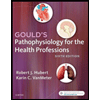 Gould's Pathophysiology for the Health Profession...NursingISBN:9780323414425Author:Robert J Hubert BSPublisher:Saunders
Gould's Pathophysiology for the Health Profession...NursingISBN:9780323414425Author:Robert J Hubert BSPublisher:Saunders Fundamentals Of NursingNursingISBN:9781496362179Author:Taylor, Carol (carol R.), LYNN, Pamela (pamela Barbara), Bartlett, Jennifer L.Publisher:Wolters Kluwer,
Fundamentals Of NursingNursingISBN:9781496362179Author:Taylor, Carol (carol R.), LYNN, Pamela (pamela Barbara), Bartlett, Jennifer L.Publisher:Wolters Kluwer,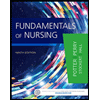 Fundamentals of Nursing, 9eNursingISBN:9780323327404Author:Patricia A. Potter RN MSN PhD FAAN, Anne Griffin Perry RN EdD FAAN, Patricia Stockert RN BSN MS PhD, Amy Hall RN BSN MS PhD CNEPublisher:Elsevier Science
Fundamentals of Nursing, 9eNursingISBN:9780323327404Author:Patricia A. Potter RN MSN PhD FAAN, Anne Griffin Perry RN EdD FAAN, Patricia Stockert RN BSN MS PhD, Amy Hall RN BSN MS PhD CNEPublisher:Elsevier Science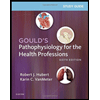 Study Guide for Gould's Pathophysiology for the H...NursingISBN:9780323414142Author:Hubert BS, Robert J; VanMeter PhD, Karin C.Publisher:Saunders
Study Guide for Gould's Pathophysiology for the H...NursingISBN:9780323414142Author:Hubert BS, Robert J; VanMeter PhD, Karin C.Publisher:Saunders Issues and Ethics in the Helping Professions (Min...NursingISBN:9781337406291Author:Gerald Corey, Marianne Schneider Corey, Cindy CoreyPublisher:Cengage Learning
Issues and Ethics in the Helping Professions (Min...NursingISBN:9781337406291Author:Gerald Corey, Marianne Schneider Corey, Cindy CoreyPublisher:Cengage Learning





